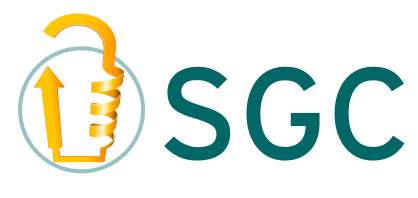 |
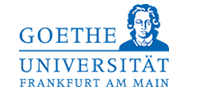 |
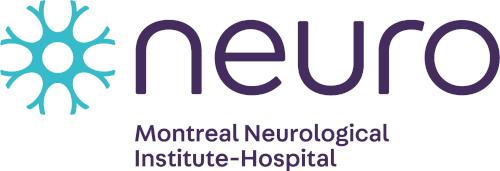 |
 |
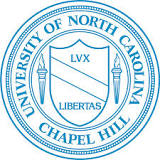 |
 |
Enamine supplies DSI poised fragment and analogue libraries to Diamond Light Source XChem facility and SGC Oxford screening efforts
PRESS RELEASE
10 January 2018




Diamond-SGC-iNEXT Poised Library supports rapid fragment elaboration for chemical probe and drug development
Kiev, Ukraine and Oxford, UK, 10 January 2018: Diamond Light Source (Diamond) and the Structural Genomic Consortium (SGC) Oxford announced today that Enamine, a chemical company and producer of novel chemical building blocks and screening libraries, will become a key supplier of poised fragment and analogue libraries to its XChem facility. Enamine will offer a new generation of the hit-finding library, Diamond-SGC-iNEXT (DSI) Poised Library to enable fast and productive fragment-based lead discovery(FBLD).
Diamond, in collaboration with the SGC Oxford, set up the XChem facility for fragment screening by X-ray crystallography to ensure public access to efficient FBLD. In addition, to enable fast and productive lead development, the collaboration developed the concept of “poised fragments” (Cox et al., Chemical Science, 2016), which constitutes its frontline screening strategy. FBLD is a common approach in academia and industry for developing new chemical probes and drug starting points (leads) from weak starting evidence, namely fragment hits. The hits must be chemically altered to improve their binding strength to the target protein, along with other properties.
The DSI Poised Library comprises 768 highly soluble fragments. Each compound is accompanied by its own virtual chemical space, which is readily accessible for synthesis and available for purchase through Enamine. Any hit from this library can be developed with follow-up chemistry within a maximum of three weeks using Enamine’s ground-breaking REAL database.
Prof Frank von Delft, Head of the XChem Collaboration and Principal Beamline Scientist at Diamond Light Source, explained: “The XChem facility has already helped over 60 users find thousands of hits across over 80 targets. To address the subsequent challenge, that chemical elaboration is generally expensive and time consuming, we developed and published the poised approach. Poised fragments can be synthesised in one step from commercially available starting materials using robust, high-yielding reactions, so that libraries of analogues can be synthesised quickly and at a low cost. Coupled with high-throughput biophysical methods, such as XChem screening but also NMR or SPR, this should provide a cost-efficient approach to early-stage fragment-based lead design.”
Dr Anthony Bradley, Project Leader on Fragment Development at SGC Oxford, added: “We quickly discovered that to realise the full power of the approach, we urgently needed to address the problem of compound supply. We are thus delighted to work with Enamine for the materialisation of the DSI Poised Library, fully benefiting from Enamine’s extensive stock of building blocks, capabilities and proven industry solutions. This puts both the primary library and follow-up analogue series within budgets and timelines of even exploratory compound discovery efforts worldwide. The SGC Oxford will be making extensive use of this offering in its many ongoing and future compound development projects.”
Michael Bossert, Head of Strategic Alliances at Enamine, commented: “The high technological degree of specialisation of Diamond and its unique XChem facility, was key to this collaboration. It is important to collaborate with high-tech companies in order to launch high-value technology-based products that aim to improve our customers R&D efficiencies and discovery project successes.”
Prof Paul Brennan, Principal Investigator for Medicinal Chemistry at SGC Oxford, and senior author of the original publication, added: “It is incredibly gratifying to see our original Diamond-SGC Poised Library (DSPL) and poised approach become a commercial offering. We hope this will allow it to become an essential tool in accelerating the development of small molecules probes and drugs.”
The library will be available to a non-exclusive group of nine research institutes operating X-ray and NMR screening located in Europe, USA and China. The European institutes include the partners of the iNEXT fragment screening effort: Diamond, EMBL and ESRF (Grenoble), NKI (Amsterdam), BMRZ (Frankfurt), FMP (Berlin) and CIRMMP (Florence). Other scientists interested in accessing and using the library for their own research are invited to do so.
For further information about the DSI Poised Library:
https://xchem.github.io/oxxchem/DSI_poised_fragment_library.xlsx
ENDS
Notes to Editors
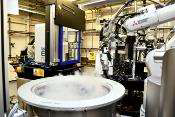
The experimental hutch of Diamond’s beamline I04-1 where XChem experiments are measured, showing the detector and BART sample changing robot that can hold 592 separate samples.

The MD2 diffractometer of Diamond’s beamline I04-1, optimised for fast sample centring. This rotates crystals in the X-ray beam during the diffraction experiment.
For high-resolution images, please contact lorna.cuddon@zymecommunications.com
Contacts
Diamond Light Source
Prof Frank von Delft
Principal Beamline Scientist
E: frank.von-delft@diamond.ac.uk
T: +44 1235 778997
SGC Oxford
Dr Anthony Bradley
Project Leader
E: anthony.bradley@chem.ox.ac.uk
T: + 44 7572 492192
Media enquiries for Diamond Light Source (incl XChem)
Isabelle Boscaro-Clarke
Head of Communications
E: isabelle.boscaro-clarke@diamond.ac.uk
T: +44 1235 77 8130
Enamine Ltd.
Michael Bossert
Head of Strategic Alliances
E: m.bossert@enamine.net
T: +38 044 537 32 18
Media enquiries
Lorna Cuddon, Zyme Communications
E: lorna.cuddon@zymecommunications.com
T: +44 7811996942
About Enamine http://www.enamine.net
Established in Kiev in 1991, Enamine combines a CRO profile with production and multi-level supply of innovative screening libraries, novel building blocks, fragments, and comprehensive chemistry support in hit discovery and drug discovery solution services, such as organic synthesis, medicinal chemistry, biological screening, ADME-PK testing, as well as fully integrated discovery collaboration.
The major catalog assets of the company is a collection of currently 2,360,000 screening compounds and dynamically increasing 180,000 building blocks with 2,000 new building blocks freshly synthesized each month providing a major competitive advantage. Enamine is heavily involved in researching on new synthesis reactions and methodologies, having made over 270 scientific publications in the past 10 years. Enamine serves the pharmaceutical, agrochemical, cosmetic, nutritional and petrochemical industries.
About Diamond Light Source http://www.diamond.ac.uk/
Diamond Light Source is the UK’s national synchrotron. It works like a giant microscope, harnessing the power of electrons to produce bright light that scientists can use to study anything from fossils to jet engines and viruses to vaccines.
The machine accelerates electrons to near the speed of light so that they emit light 10 billion times brighter than the Sun. These bright beams are then channelled into laboratories known as ‘beamlines’. Here, scientists use the light to study a vast range of subject matter, from new medicines and treatments for disease to innovative engineering and cutting-edge technology.
Whether it’s fragments of ancient paintings or unknown virus structures, at the synchrotron, scientists can study their samples using a machine that is 10,000 times more powerful than a traditional microscope. Diamond is one of the most advanced scientific facilities in the world, and its pioneering capabilities are helping to keep the UK at the forefront of scientific research.
About the Structural Genomics Consortium (SGC)
The SGC is a pre-competitive public-private partnership that accelerates research in human biology and drug discovery by making all of its research output freely available to the scientific community. To achieve its mission, the organization is building an open and collaborative network of scientists: the SGC has active research facilities at seven leading academic institutions across the globe (Toronto and Montreal- Canada, Oxford-UK, UNICAMP-Brazil, Karolinska-Sweden, UNC Chapel Hill-USA and Frankfurt- Germany), and SGC scientists collaborate with more than 300 researchers in academia and industry. The SGC is a registered charity (number 1097737) that receives funds from AbbVie, Bayer Pharma AG, Boehringer Ingelheim, Canada Foundation for Innovation, Eshelman Institute for Innovation, Genome Canada, Innovative Medicines Initiative (EU/EFPIA), Janssen, MSD, Merck KGaA, Novartis Pharma AG, Ontario Ministry of Economic Development and Innovation, Pfizer, São Paulo Research Foundation- FAPESP, Takeda and Wellcome Trust. For more information, visit www.thesgc.org.
